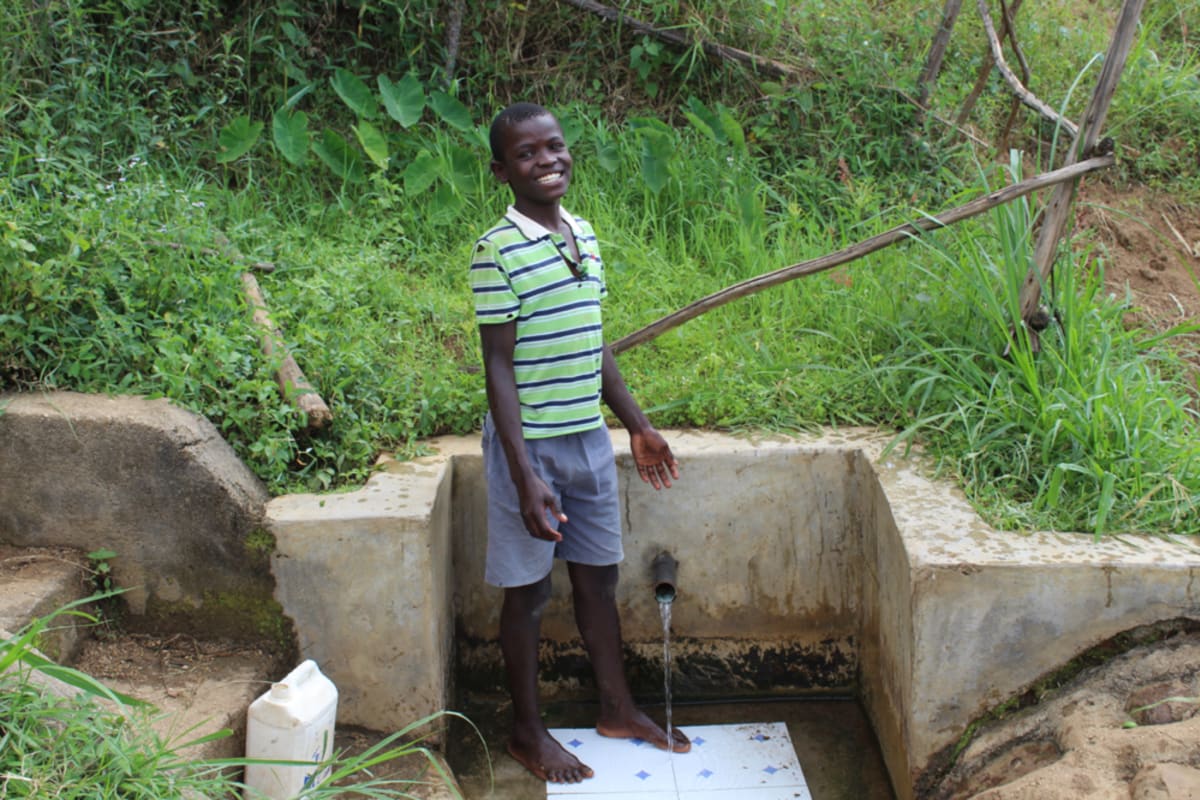"I try to boil water from this spring for my family to use so that we don't fall sick," says Mrs. Adelite Ondako.
"The challenge comes when I have to visit a community member or when we gather for a certain ceremony away from my home and I have to drink water. Many of our people don't treat this water and so this ends up making me sick. It's hard to avoid this water as long as you are staying in this village. I can't carry my water everywhere I go, neither can I protect my family out there from consuming untreated water."
Musango Village is in Kakamega County, Kenya. The primary water source for this part of Musango is Mushikhulu Spring. It is a dirty water source, but it still meets the needs of around 84 people from 12 different households.
Mushikhulu Spring is entirely open to all sorts of contamination. The people have a hard time, especially during the rainy season when the spring gets dirtier. This dirty water makes typhoid a common challenge. Much of their time has been wasted at the spring since it takes one over seven minutes just to fill a 20-liter jerrycan.
It is a very green area with lots of farm crops growing. The sugarcane farms keep this rural village green, quiet, and peaceful. Houses in this village are a mix of permanent and more temporary structures. The temporary ones are made of wood, mud, and iron sheets for the roofs. Some use grass for roofing, and cow dung is spread on the walls as a sealant and insect repellant.
A day in Musango is filled with farm work. Farming makes people rise early in the morning before the sun comes up. The house chores are traditionally set aside for women while the men take care of livestock. Before the grownups can leave for the farm, the children must be seen off to school.
During days off, children play at home, help fetch water, and watch over any family babies. Lunch is rare, with most families reuniting late in the evening when bathing and preparation of dinner starts. Some may go the market or shopping center to get household items before its’ dusk, and men bring the animals back home. The family shares the evening meal and calls it a day.
What we can do:
Training
Community members will attend hygiene and sanitation training for at least two days. This training will ensure participants have the knowledge they need about healthy practices and their importance. The facilitator plans to use PHAST (Participatory Hygiene and Sanitation Transformation), CLTS (Community-Led Total Sanitation), ABCD (Asset-Based Community Development), group discussions, handouts, and demonstrations at the spring. One of the most important topics we plan to cover is the handling, storage, and treatment of water. Having a clean water source will be extremely helpful, but it is useless if water gets contaminated by the time it’s consumed. Handwashing will also be a big topic.
Training will also result in the formation of a committee that will oversee operations and maintenance at the spring. They will enforce proper behavior around the spring and delegate tasks that will help preserve the site, such as building a fence and digging proper drainage. The fence will keep out destructive animals, and the drainage will keep the area’s mosquito population at a minimum.
Sanitation Platforms
Less than half of families using the spring have a pit latrine of their own.
Most pit latrine walls look like they're about to collapse. Most holes over the pits are a bit too large. Many have a flap of plastic or fabric serving as a door.
On the final day of training, participants will select five families that should most benefit from new latrine floors.
Training will also inform the community and selected families on what they need to contribute to make this project a success. They must mobilize locally available materials, such as bricks, clean sand, hardcore, and ballast. The five families chosen for sanitation platforms must prepare by sinking a pit for the sanitation platforms to be placed over. All community members must work together to make sure that accommodations and food are always provided for the work teams.
Spring Protection
Protecting the spring will ensure that the water is safe, adequate and secure. Construction will keep surface runoff and other contaminants out of the water. With the community’s high involvement in the process, there should be a good sense of responsibility and ownership for the new clean water source.
Fetching water is predominantly a female role, done by both women and young girls. Protecting the spring and offering training and support will, therefore, help empower the female members of the community by giving them more time and efforts to engage and invest in income-generating activities.

 Protected Spring
Protected Spring
 Rehabilitation Project
Rehabilitation Project











































